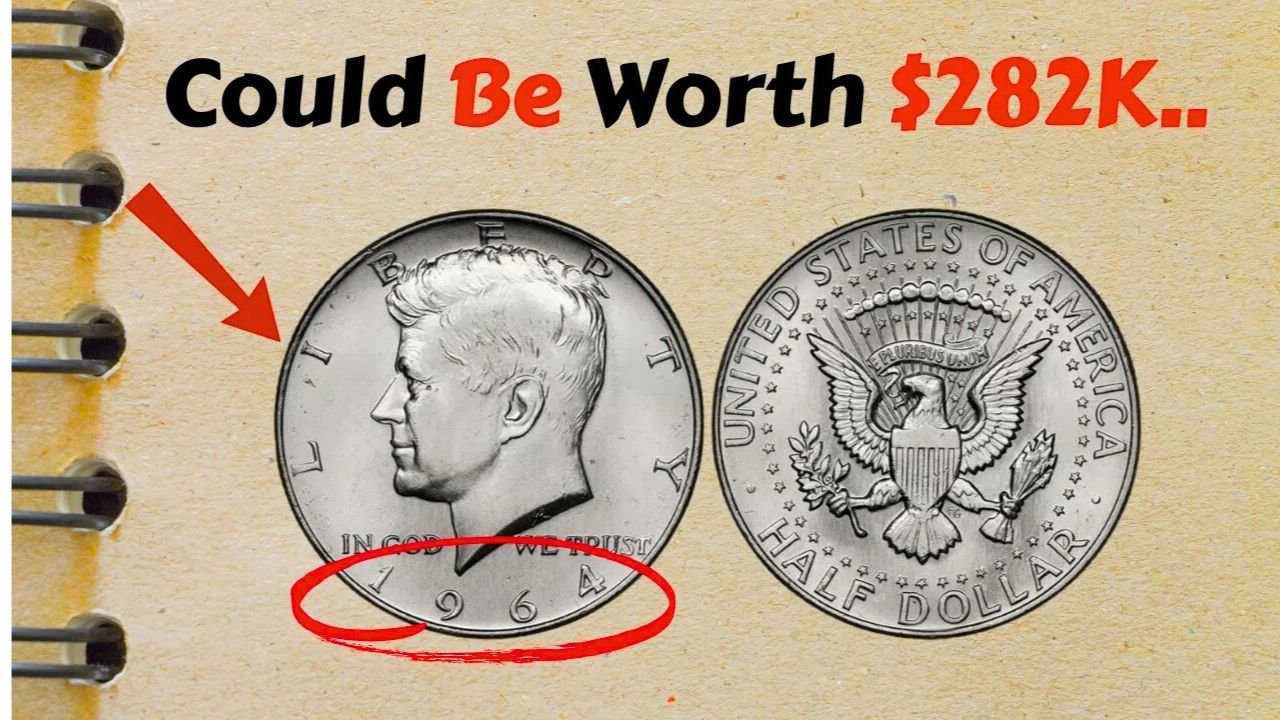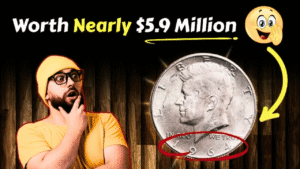Imagine finding a penny in your pocket worth nearly a third of a million dollars! The 1943 Bronze Lincoln Wheat Penny, a rare wartime error coin, sold for $282,000 at a 2023 auction, captivating collectors and sparking treasure hunts nationwide. With only a handful known to exist, this penny’s unique history and scarcity make it a numismatic legend. Could one be hiding in your change? Let’s uncover the story, value, and how to spot this incredible coin!
The Fascinating History of the 1943 Lincoln Wheat Penny
A Wartime Minting Error
In 1943, World War II led to copper shortages, so the U.S. Mint switched to zinc-coated steel for pennies. By mistake, a few bronze blanks from 1942 were used at the Philadelphia Mint, creating the rare 1943 Bronze Lincoln Wheat Penny. These unauthorized coins are among the rarest in U.S. history.
Why So Rare?
Experts estimate only 10–15 bronze pennies were struck in Philadelphia, with one known from Denver. Most were discovered decades ago, but their scarcity and historical significance drive their value. Two are in museums, leaving few for collectors.
A Numismatic Legend
Designed by Victor D. Brenner, the Lincoln Wheat Penny (1909–1958) features Abraham Lincoln’s portrait and wheat stalks on the reverse. The 1943 bronze error, with its wartime backstory, has appeared in news stories and even inspired a 1944 lawsuit over a rumored $10,000 reward.
Why Is the 1943 Bronze Penny So Valuable?
Rarity and Demand
With fewer than 20 confirmed examples, the 1943 bronze penny is a collector’s holy grail. Its scarcity, combined with high demand, pushes prices into the hundreds of thousands. A Mint State (MS-62) example sold for $282,000 in 2023.
Condition Matters
Uncirculated coins with sharp details fetch the highest prices. The finest known, graded MS-63, sold for $1.7 million in 2010. Even circulated examples can sell for $100,000–$200,000 due to their rarity.
Auction Highlights
| Sale Year | Grade | Mint | Sale Price | Auction House |
|---|---|---|---|---|
| 2023 | MS-62 | Philadelphia | $282,000 | Heritage Auctions |
| 2010 | MS-63 | Philadelphia | $1,700,000 | Legend Numismatics |
| 1996 | AU-50 | Philadelphia | $82,500 | Stack’s Bowers |
| 2019 | MS-61 | Denver | $312,000 | GreatCollections |
| 1981 | VF-20 | Philadelphia | $10,000 | Bowers and Merena |
How to Spot a 1943 Bronze Lincoln Wheat Penny
Key Identifying Features
- Material: Bronze pennies are non-magnetic and have a reddish-brown color, unlike silver-colored, magnetic steel pennies.
- Date: Must read “1943” on the obverse, with Lincoln’s portrait.
- Mint Mark: Most have no mint mark (Philadelphia). One known Denver (“D”) example exists.
- Weight: Bronze pennies weigh 3.11 grams; steel pennies weigh 2.7 grams.
- Design: Look for sharp wheat stalks on the reverse and clear details on Lincoln’s hair and bow tie.
Other 1943 Errors
- Copper-Plated Steel: Some steel pennies were plated with copper, mimicking bronze. These are worth $10–$50 but lack the weight and value of true bronze coins.
- Double Die: Rare 1943 steel pennies with doubled text can fetch $100–$1,000.
- Off-Center Strikes: Misaligned coins may sell for $50–$500.
Beware of Fakes
Counterfeiters plate steel pennies with copper to fake bronze versions. Test with a magnet (bronze isn’t magnetic) and verify weight. Always authenticate with PCGS or NGC grading services.
Where to Find Your Valuable Penny
Everyday Treasure Spots
- Pocket Change: Check pennies from stores, vending machines, or tip jars.
- Bank Rolls: Request penny rolls from banks and inspect each coin.
- Old Collections: Search family coin jars, attics, or inherited boxes.
- Flea Markets: Unsearched penny lots at markets or eBay may hide rarities.
Hunting Tips
- Use a Magnet: Steel pennies stick to magnets; bronze ones don’t.
- Weigh Coins: Use a digital scale to confirm 3.11 grams for bronze pennies.
- Magnify Details: A 5x–10x magnifying glass helps spot errors or wear.
- Join Communities: Reddit’s r/coins or PCGS forums share tips and resources.
- Store Safely: Use plastic holders to protect potential finds from damage.
Selling Your Find
If you suspect a bronze penny, get it graded by PCGS or NGC to confirm authenticity and condition. Sell through reputable auction houses like Heritage Auctions, Stack’s Bowers, or GreatCollections, or list on eBay with clear photos and certification.
The Legacy of the 1943 Bronze Penny
A Wartime Icon
The 1943 penny captures America’s World War II era, when every resource mattered. Its accidental creation adds intrigue, making it a favorite among collectors and historians.
Inspiring Treasure Hunts
Stories like a 1943 bronze penny found in a schoolboy’s lunch change in 1947 fuel modern searches. Social media platforms like X and TikTok amplify the excitement, with collectors posting finds and tips.
A Growing Market
Error coins are booming, with a 400% increase in 1943 penny submissions to grading services since 2020. The blend of history, rarity, and potential wealth keeps the hunt alive.
FAQs About the 1943 Bronze Lincoln Wheat Penny
1. Why is the 1943 bronze penny so valuable?
Its value comes from extreme rarity (10–15 known examples), a wartime minting error, and high collector demand. A 2023 auction saw one sell for $282,000.
2. How can I tell if my 1943 penny is bronze?
Bronze pennies are non-magnetic, weigh 3.11 grams, and have a reddish-brown color. Steel pennies are magnetic, weigh 2.7 grams, and appear silvery.
3. Are all 1943 pennies valuable?
No, most are steel and worth 10–50 cents. Only bronze pennies or rare steel errors (e.g., double die) have significant value.
4. Where can I sell a 1943 bronze penny?
Get it graded by PCGS or NGC, then sell through auction houses like Heritage Auctions, Stack’s Bowers, or online platforms like eBay.
5. Could 1943 bronze pennies still be in circulation?
Yes, though rare, some may remain in pocket change, bank rolls, or old collections. Careful inspection could uncover a hidden gem.
Conclusion: Your Penny Could Be a Hidden Fortune!
The 1943 Bronze Lincoln Wheat Penny is more than a coin—it’s a piece of wartime history with life-changing value. With prices reaching $282,000, this rare error coin proves treasures can hide in plain sight. Grab a magnet, check your pennies for that telltale bronze glow, and visit pcgs.com or ngccoin.com to verify finds. Whether in a jar or your pocket, your next penny could be worth thousands. Start your treasure hunt today!




